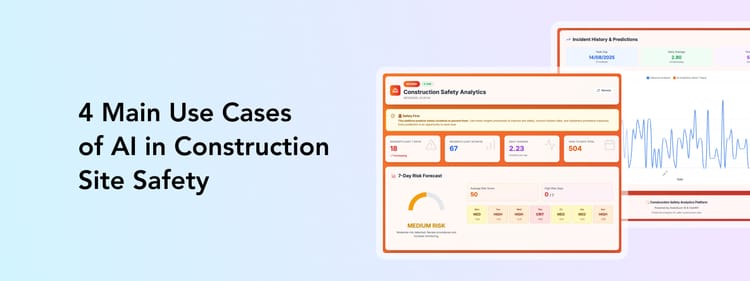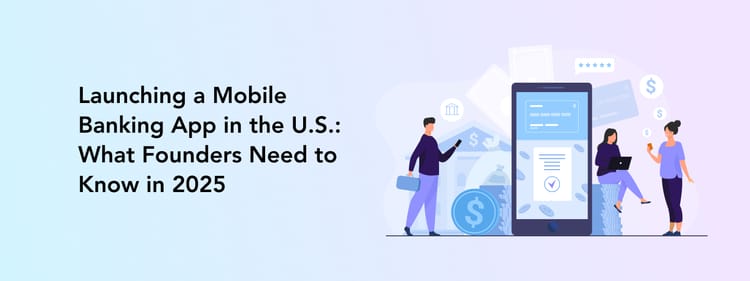Did you know that 84 million Americans use healthcare mobile apps, and around 30% of them rely heavily on these apps to manage their health?
Consider this: chronic diseases are the leading cause of illness and disability in the U.S., accounting for nearly 90% of the nation’s $4.1 trillion in annual health-care spending.
Preventive medicine might just be the plot twist healthcare needs, and help people take charge before problems even start.
Rather than waiting until symptoms become serious, more people are shifting to early detection, health habit tracking, and digital tools. Mobile health apps let users stay proactive about their health and wellness.
In this article, we’ll explore how mHealth apps improve preventive healthcare and wellness programs. All with real-world examples and statistics.
Track Chronic Conditions
Chronic diseases account for about 70% of healthcare spending in the U.S. That’s a huge share, and it’s mostly spent on managing conditions like diabetes, hypertension, or asthma. What if we could shift from reacting to symptoms to preventing them?
Mobile healtcare apps are stepping up to make that shift possible. Solutions like MySugr (for diabetes), Omron Connect (for blood pressure), and Propeller Health (for asthma) let users track vitals, log symptoms, set medication reminders, and share updates with their doctor. These features make it easier to catch changes early, reduce emergency visits, and support better long-term outcomes.
Research shows that about 59.8% of adults with chronic conditions in the U.S. use mobile health apps and are significantly more likely to engage in self-management behaviors.
Here’s how these apps help you become a proactive patient:
- Track daily metrics like blood sugar or blood pressure at your convenience
- Receive personalized reminders for medication or routine check-ups
- Get alerts or insights when readings go outside safe ranges
- Share reports with your healthcare team for more informed care
- Use lifestyle suggestions tailored to your health data to stay ahead
In such a way, users move from being a patient passively waiting for help to an active partner in their health journey. This mindset change is what makes health apps genuinely powerful.
Manage Lifestyle and Healthy Habits
Healthy habits play a powerful role in preventive healthcare, yet building them often gets pushed aside. Mobile wellness apps help users stay consistent by providing reminders, tracking progress, and nudging behavior daily.
For instance, a systematic review found that apps using techniques like self-monitoring, goal-setting, and cues produced measurable habit-strength improvements.
These tools make lifestyle change more manageable by reminding users to stay active, drink water, or get enough rest, while visualizing progress to keep motivation high.
Here’s how habit-tracking apps help users stay on track:
- Send personalized reminders to drink water, exercise, or sleep on time
- Display progress charts and streaks for visible motivation. Research shows that feedback and small rewards reinforce commitment to healthy habits.
- Suggest small, data-driven goals that feel achievable
- Encourage accountability through challenges or shared progress
Small steps like tracking activity, water, or medication together with motivation and gamified elements help users stay consistent and care about their wellbeing every day.
Plus, you can go a step further and make your app more than tracking tool by adding community feaures. For example, Perpetio applied these principles when developing HIgedi, a wellness app supporting women with gestational diabetes. The goal was to go beyond simple tracking and create a space for connection and shared lifestyle management.

The app combines location-based community discovery, chat features, and personalized content to help users find and support one another. This approach reflects findings from recent studies showing that perceived social support and e-health literacy are strongly linked to better glycemic-management decisions in pregnant women.
Predict Critical Conditions
AI-powered predictive analytics is transforming preventive healthcare by spotting risks before they turn critical.
Machine learning models can detect subtle changes in health data, for example, like abnormal heart rhythms, oxygen levels, or blood pressure trends, long before symptoms appear.
Consider these findings: combining predictive analytics with tailored care reduced 90-day readmissions by 68% and emergency service calls by 49%, according to a recent study. And that’s not it: another study found that predictive models can lower emergency department visits by 25% and reduce hospital readmissions by 20%.
Here’s how predictive apps make care proactive, not reactive:
- Collect continuous health data via wearables and sensors
- Analyze patterns to detect early warning signs
- Send real-time alerts to users or healthcare providers
- Support doctors with AI-assisted recommendations for follow-up
As these technologies advance, we’ll likely see more mHealth apps integrating predictive analytics and helping users stay one step ahead of critical health events.
Empower Proactive Patients
Preventive healthcare apps are changing how people think about their well-being. Instead of waiting for symptoms to appear, users are becoming active participants in their health journey by tracking, learning, and acting early.
In fact, a recent systematic review published in Nature highlights that motivational strategies such as personalized feedback, gamification, regular reminders, and social interaction significantly boost users’ engagement and adherence to self-care behaviors.
These elements help users stay consistent with their health routines, turning digital health apps into powerful tools for building long-term wellness habits.
Mobile apps help build this engagement by offering clear feedback loops, personalized insights, and gamified motivation to stick with healthy habits.
Apps that empower proactive patients often include features like:
- Real-time data tracking for physical activity, sleep, or nutrition
- Educational modules or learn tabs promoting self-awareness
- Gamified systems that reward consistency and improvement
- Personalized health tips and reminders based on user behavior
A great example is eargym, a hearing wellness app developed with Perpetio’s support. With 1 in 6 adults in the UK experiencing some level of hearing loss, eargym motivates users to take charge of their hearing health through interactive tools and gamified challenges.

How to Build a Health and Wellness App Step by Step
Creating a wellness app that supports users in staying healthy, tracking habits, and managing chronic conditions requires a structured approach.
With the right development partner, the process becomes clear and manageable. Let’s go through the key stages.
Step 1: Research your users and define the goal
Start by identifying who your app is for: fitness enthusiasts, people managing chronic conditions, or users looking to improve daily habits.
Research what motivates them and what problems they face in staying consistent.
Study market trends and analyze popular apps like MyFitnessPal, Headspace, or MySugr to understand what works well and what users still miss.
Define your app’s unique value and the set of core features you’ll start with; for example:
- Activity and nutrition tracking
- Sleep monitoring
- Stress management tools
- Habit reminders and streaks
- Personalized health insights
Step 2: Design an engaging and simple user experience
Health and wellness apps should feel friendly, not clinical. Focus on creating an intuitive interface with progress visuals, calm color palettes, and motivational elements.
Make it easy for users to log habits, view daily summaries, and celebrate small wins.
Features like streaks, badges, and feedback messages can encourage consistency.
If the app connects with wearables (like Apple Watch or Fitbit), plan smooth onboarding and device syncing early in the design process.
Step 3: Choose the right technology stack
Decide how to build your app:
- Native development (Swift for iOS, Kotlin for Android) ensures top performance and smooth hardware integration (important for sensors and wearables).
- Cross-platform development (Flutter or React Native) allows faster delivery and easier maintenance.
Your backend should handle secure user accounts, data analytics, and integrations with APIs from fitness devices or nutrition databases.
Also, plan data privacy from the start, even wellness data deserves strong protection.
Step 4: Build features that motivate consistency
Your development phase should focus on making users feel guided and supported.
Some essential features for wellness apps include:
- Personalized goals and progress tracking
- Smart reminders and motivational nudges
- AI-powered insights or predictive tips
- Integration with wearables or IoT devices
- Social sharing or community challenges
These small interactions turn the app from a tracker into a true wellness companion.
Step 5: Test for usability and engagement
Before launch, test your app with real users to ensure it’s intuitive and rewarding.
A QA specialist will check all core flows: registration, syncing data, logging activities, and viewing progress.
They will also gather user feedback about how easy it feels to stay consistent, not just if the app “works.”
If possible, you can run an early-access program or pilot to fine-tune the experience before public release.
Step 6: Launch and grow with data
After launch, track how users interact with your app.
Monitor metrics like daily active users, retention rate, goal completion, and engagement time.
Based on insights, release updates that improve the experience: maybe smarter reminders, more personalized insights, or gamified challenges.Wellness apps thrive on iteration and user feedback.
Quick checklist before you start
To make your wellness app development journey smoother, we prepared a quick checklist covering everything from idea validation to post-launch analytics.
✅ Defined target audience and problem your app solves
✅ Research-based feature set and user personas
✅ Wireframes and validated UX flow
✅ Technology stack and integrations plan (e.g., wearables)
✅ Privacy policy and secure data storage setup
✅ Engaging UI design and gamified elements
✅ Tested prototype and early user feedback plan
✅ Metrics to measure engagement and success
To make your wellness app development journey smoother, we prepared a quick checklist covering everything from idea validation to post-launch analytics.
Building a wellness app means creating a product that motivates, supports, and empowers users to take care of their health. With the right approach, such apps help people stay consistent with their habits and feel more in control of their well-being.
Consider Perpetio Your Trusted Partner
Perpetio helps businesses turn wellness ideas into meaningful digital products.
From research and UI/UX design to native or cross-platform development, we take care of every stage to make the product secure, engaging, and tailored to real user needs.
We have collaborated with wellness startups like HIgedi and eargym, creating apps that connect communities, encourage preventive care, and promote healthy lifestyles. With experience in mobile design, IoT integration, and gamification, we help your idea grow into a product that supports well-being.
Ready to start your wellness app journey? Let’s build it together with Perpetio. We offer free business and tech consultations — contact us to get one.





